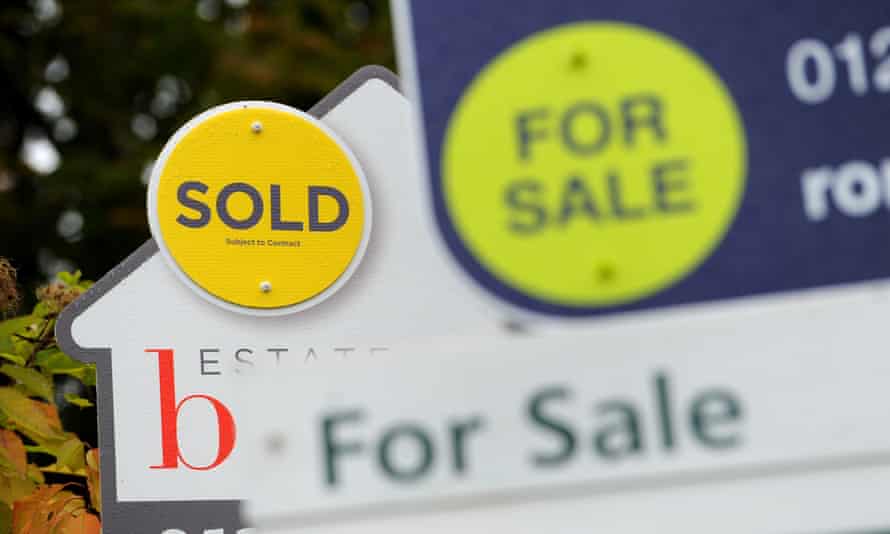House prices tipped to rise by twice as much in Yorkshire as in London
03-09-2021

Savills expects prices to rise by an average of 4% across the UK this year, and by 21.1% before the end of 2025. Photograph: Andrew Matthews/PA
House prices tipped to rise by twice as much in Yorkshire as in London
Savills says outlook for UK housing market is improving, with Yorkshire set for 28% gain in five years
Hilary Osborne
Property prices in Yorkshire and the north-west could rise by almost 30% over the next five years, more than double the rate of growth in London, a leading property firm has predicted.
Researchers at Savills had expected house prices to remain flat in 2021 across the UK, but measures to support the market including last week’s budget announcements, combined with the easing of lockdown measures, have led them to revisit their forecasts.
Lucian Cook, the head of residential research at Savills, said 2021 had been set to be “a complex and uneven year” for the housing market. “But the outlook has improved since the beginning of the year given the speed of the vaccination programme, the expected relaxation of social distancing measures and government support for both jobs and the housing market,” he said.
Advertisement
The company said it now expected prices to rise by an average of 4% across the country this year, and by 21.1% before the end of 2025. This would take the average cost of a home in the UK to £279,644.
Over the next five years the biggest increases are forecast to be in the north-west of England, where prices could go up by 28.8% to an average of £227,879, and in Yorkshire and Humberside, where Savills predicts a 28.2% rise, taking the average to £220,921.
Prices in London are predicted to grow by 12.6% across the five-year period, taking the average to £547,868.
House prices across the country have been lifted by a “race for space”, as people have changed their lifestyles during the pandemic, and by cuts to stamp duty. These have fuelled activity in the market for homes costing £500,000 and upwards, where buyers have the most tax to save.
Regions outside London have proved popular with buyers who no longer face a commute into the city, but Savills said a key reason for larger price rises in other parts of the country was simply that there was more capacity for growth.
Cook said: “The expectation that interest rates will stay lower for much longer than was predicted pre-pandemic means there remains capacity for medium-term house price growth despite the unexpectedly strong performance of last year. Across the country as a whole, five-year price growth of around 20% looks sustainable without unduly depleting mortgage affordability.”
Last week’s budget extended the temporary lifting of the stamp duty threshold in England and Northern Ireland until the end of June, and brought a new government guarantee for lenders to support the return of 95% mortgages.
High house prices in London and the south-east make it hard for borrowers to pass affordability checks for low-deposit mortgages, so the new home loans are likely to be most helpful for buyers in the Midlands and the north of England.
Savills said it expected there to be 1.4m transactions this year, dropping back to 1.25m next year, compared with 1m in 2020.

